Pipe Carved From Black Slate (Argillite) Item Number: E2586-0 from the National Museum of Natural History








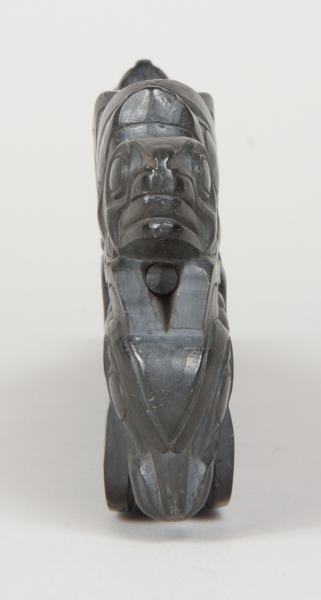

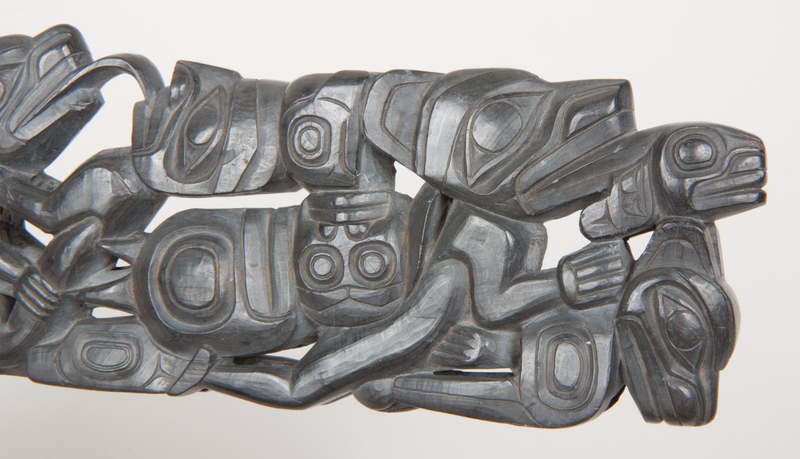
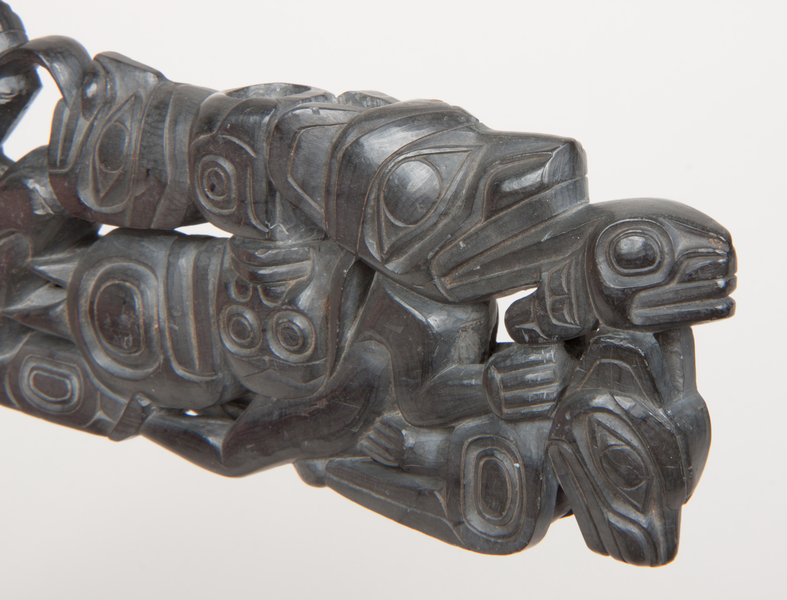
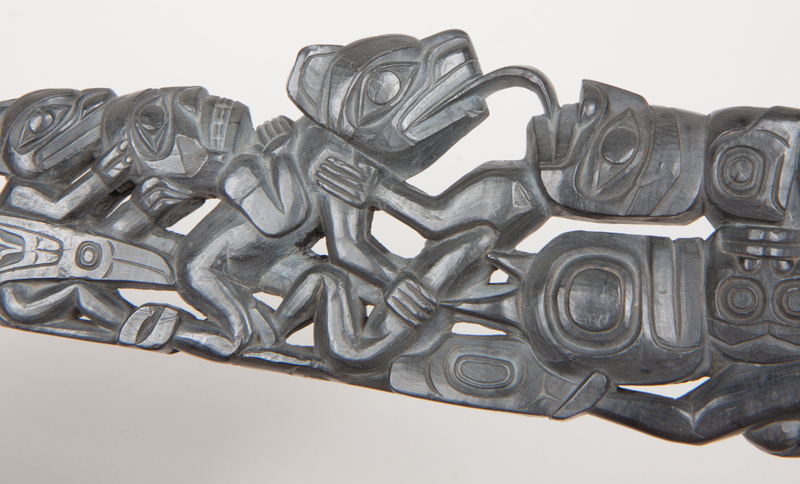
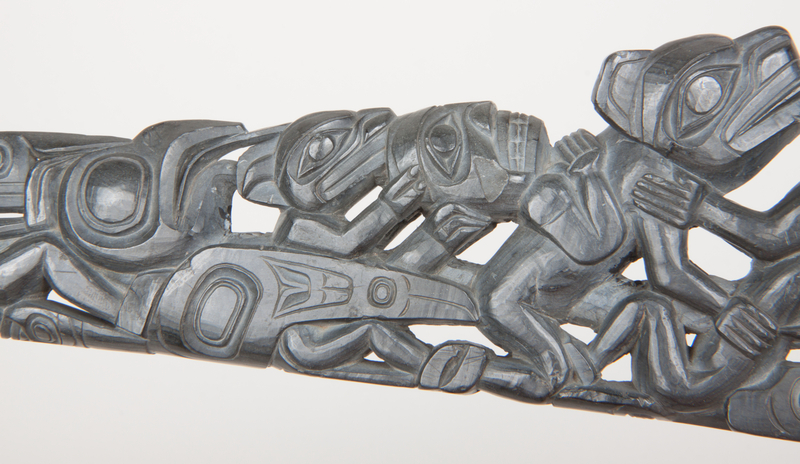

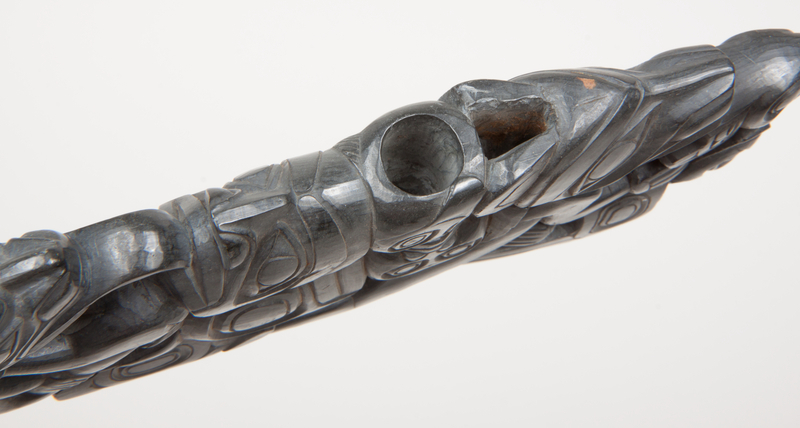
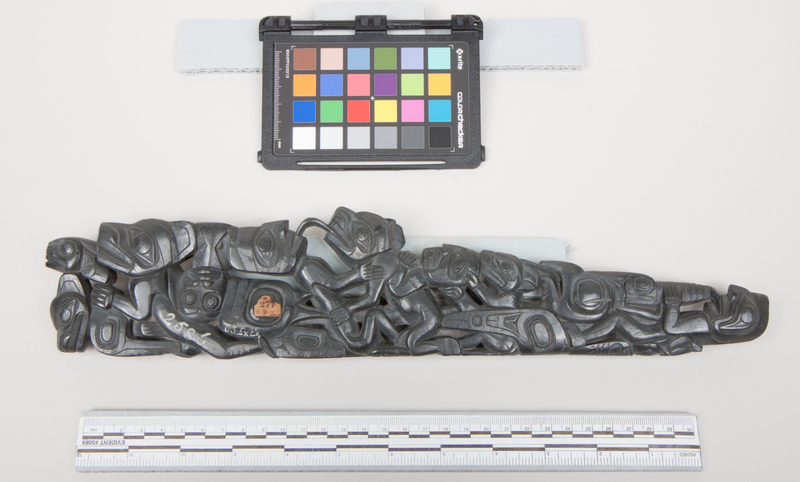
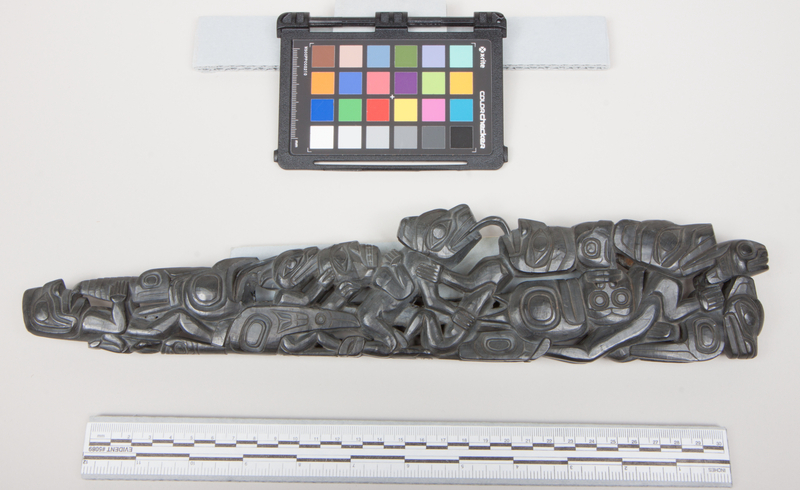
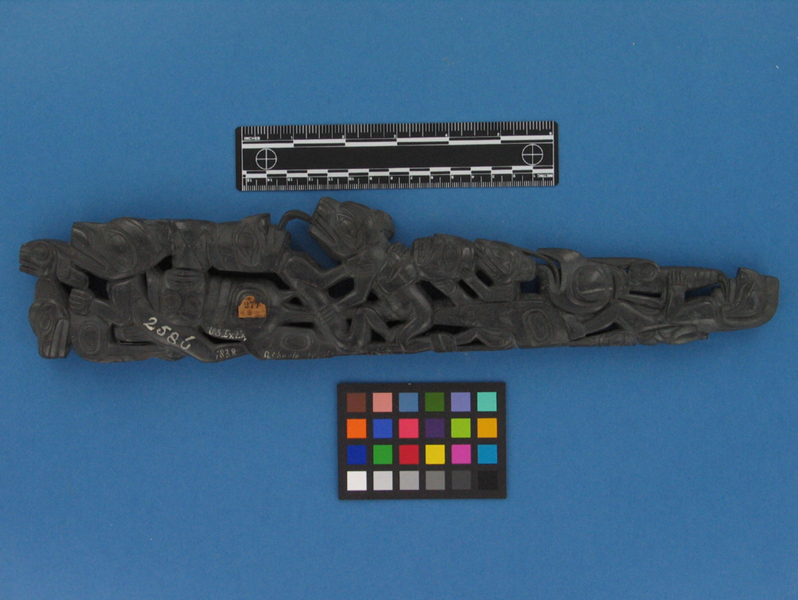
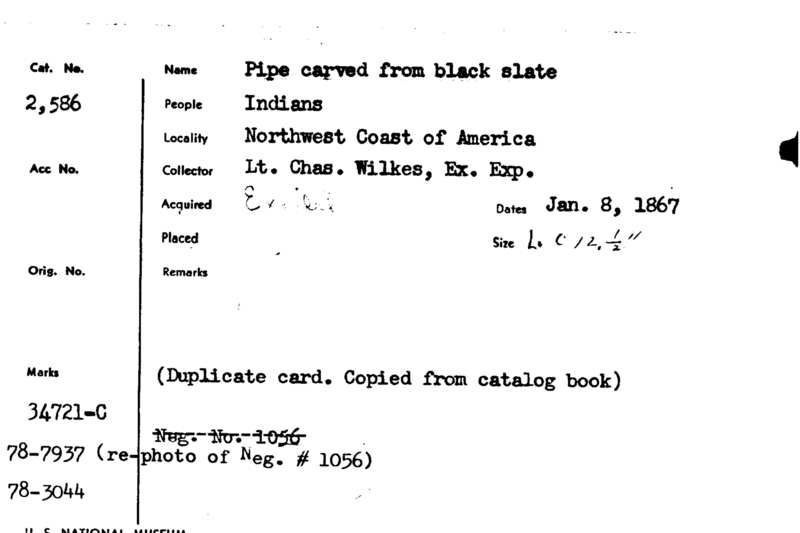

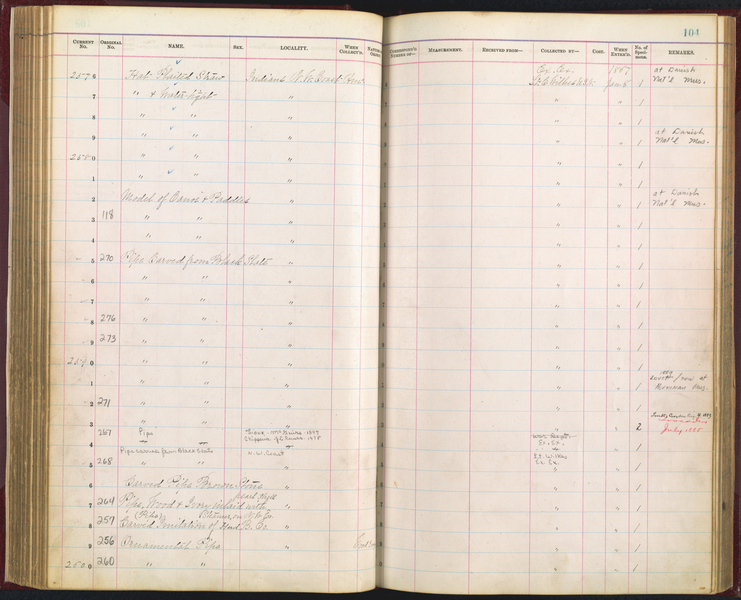
Notes
Illus. Pl. 61, p. 95 and described p. 147 in Bear Mother chapter of Barbeau, Charles Marius. 1953. Haida myths illustrated in argillite carvings. [Ottawa]: Dept. of Resources and Development, National Parks Branch, National Museum of Canada. Motifs identified there as "The Bear embraces the woman and projects his tongue into her mouth. Other stylized figures of the same early period." ILLUS. PL. 12, 13, AND 15, P. 53 IN "KADASHAN'S STAFF" BY ROBIN K. WRIGHT, AMERICAN INDIAN ART MAGAZINE, VOL. 17, NO. 4 AND ID THERE AS ARGILLITE PIPE, HAIDA, COLLECTED BY WILKES EXPEDITION AT MOUTH OF THE COLUMBIA RIVER IN 1841 FROM A HUDSON'S BAY COMPANY SHIP WHICH HAD JUST RETURNED FROM A TRIP TO THE NORTH. IT IS LIKELY THAT IT WAS NEWLY CARVED AT THAT TIME. WRIGHT ID'S CARVER AS PROBABLY SAME PERSON WHO CARVED PIPE CAT. NO. 2587, AND ILLUSTRATES OTHER STYLISTICALLY SIMILAR OBJECTS IN ARTICLE. Illus. Fig. 3.40, p. 156, and discussed p. 156-159 in Wright, Robin Kathleen. 2001. Northern Haida master carvers. Seattle: University of Washington Press. Wright speculates carver may be Albert Edward Edenshaw (gwaaygu 7anhlan)?Provenience note, in 1841 Oregon Territory encompassed the land from Russian Alaska to Spanish California and from the Pacific to the Continental Divide. The U.S. Exploring Expedition did not go to Canada, but did reach Oregon Territory in 1841, and carried out a hydrographic survey of the Columbia River from its mouth to the Cascades, as well as doing some surveying inland.They had dealings with Hudson's Bay Company staff during that time, and it is probable that the HBC is the source of a number of the Northwest Coast artifacts collected by the expedition.
Item History
- Made in Oregon, USA
- Collected in Oregon, USA during 1841
- Received from United States Exploring Expedition during 1858
What
- Name
- Pipe Carved From Black Slate (Argillite)
- Identification Number
- E2586-0
- Type of Item
- pipe
Who
- Culture
- Haida
- Received from
- United States Exploring Expedition
Where
- Holding Institution
- National Museum of Natural History
- Made in
- Oregon, USA
- Collected in
- Oregon, USA
When
- Collection Date
- during 1841
- Acquisition Date
- during 1858
Other
- Accession Number
- 66A00050